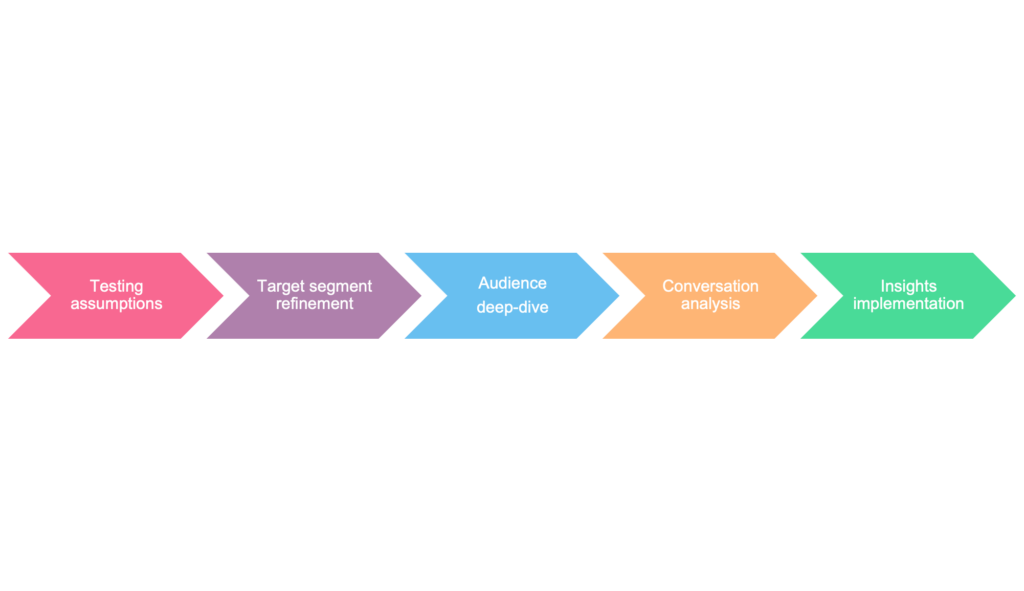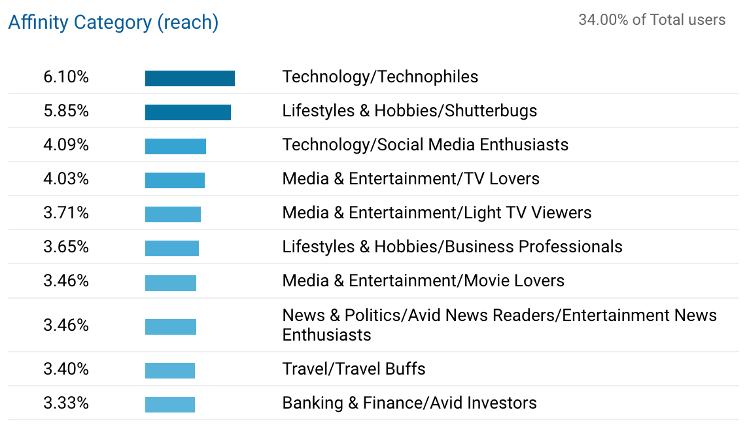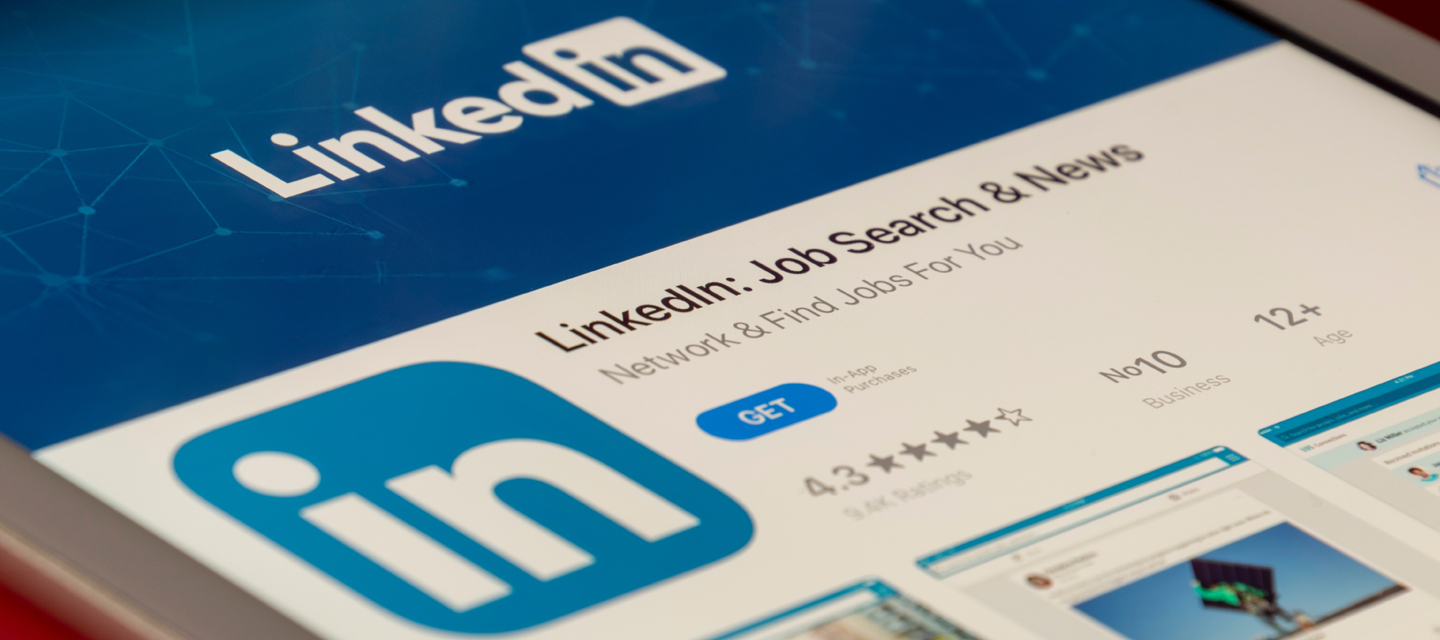Unveiling the power of audience analysis: Gaining insights for effective strategies
In this blog, we will walk you through MintTwist’s comprehensive process of audience analysis, helping you uncover key details about your audience and harness them to drive strategic output.


In the dynamic and ever-evolving landscape of marketing and communication, understanding your target audience is paramount to the success of your campaigns. Audience analysis empowers organisations to delve deeper into their audience’s preferences, behaviours, and motivations, providing invaluable insights for crafting tailored strategies across various platforms. In this blog, we will walk you through MintTwist’s comprehensive process of audience analysis, helping you uncover key details about your audience and harness them to drive strategic output.
Need help better understanding your audience? Get in touch.
How we conduct audience analysis at MintTwist

MintTwist follows a 5-step process for target audience research. The clients we work with may start at any point along this journey, we help them get to the final implementation stage and beyond.
To execute the following steps, we use a combination of existing reports and platform knowledge, real-time website data, leading audience intelligence tools focusing on consumer segmentation and cultural insights, and social listening tools.
Let’s take a look at what’s involved at each stage.
Step 1: Testing assumptions
Do you know who your audience is and who your target should be?
Before we look to uncover deep audience insights, we first want to check that we’re looking to target the right audience by comparing assumptions with real data.
Who is your existing audience?

Customer demographics: Understand the demographics of your current customers or clients, such as age, gender, location, occupation, etc.
Social media followers: Analyse the characteristics and preferences of your social media followers to gain insights into their interests and engagement patterns.
Website visitors: Dive into your website analytics to discover the demographics, browsing behaviour, and engagement levels of your visitors.
Perception vs reality: Do your perceptions match the data? Perhaps you are engaging a particular segment via your social media channels very well, but you’re not seeing them follow through to your website. Or, another segment could be highly dominant in your web traffic results, yet you’re not seeing sales from them.
Uncovering who your audience is and at what stage of the purchase funnel they are is step 1 in crafting any campaign or strategy.
Who is your competitor’s audience?
Explore the customers of your competitors to identify any segments that you might be missing. Determine whether these segments are relevant or irrelevant to your business objectives.
MintTwist can help you remove assumptions about your competitors’ audiences by uncovering who their actual social followers are.
What are you trying to achieve?
What are your business and campaign-level goals? Are you currently working on a global social media strategy which must encompass many stakeholders? Are you planning a tailored paid media campaign to generate leads or drive attendants to a local event? The purpose of your research must match that of your campaign.
Step 2: Target segment refinement
After running step 1, it’s time to sit down and reassess who you want to target.
Assess original assumptions: Evaluate whether your original assumptions about your target audience align with the reality of your current audience.
Audience prioritisation: Determine whether you should prioritise certain groups within your target audience based on their significance and potential for results. The desired result will be based on the campaign or strategy you’re currently building out.
Introducing new audience segments: Based on the findings, consider introducing new segments that align with your business goals and have untapped potential.
Step 3: Target audience deep-dive
Now the real work begins. Now that you have refined your target segments, it’s time to conduct a comprehensive deep dive into who they really are and how to target them to make your campaign successful. We set up tailored searches to explore the following dimensions:
Who are they?

Delve into the demographic information of your target audience, such as age, gender, income level, education, and any other relevant factors. This will provide a foundational understanding of who they are and help with many social targeting set ups.
Where are they?

Analyse your audience’s online habits and preferences. Determine which social media platforms they use frequently and their preferred communication channels. Understand their social relevance, including their involvement in online communities, influencers they follow, and their affinity for specific media outlets or content. This will help you build out your channel strategy and prioritisation.
When are they most active?
Identify the days and times when your target audience is most active and engaged online. This knowledge will help you optimise the timing of your communications (be it on owned channels or optimising paid campaigns) and ensure maximum reach and impact.
Why are they there?
Understand the motivations behind your audience’s presence on various platforms. Determine how they utilise social media, whether it is for entertainment, networking, information gathering, or other purposes. This insight will enable you to tailor your messaging to align with their intentions or, in some cases, eliminate misaligned channels from your strategy.
What are they already engaging with?
Analyse the type of content and topics your target audience is already engaging with. Understand their preferences, interests, and the types of media they consume. This knowledge will guide you in creating compelling and relevant content to capture their attention. This can include message framing, creative formats, imagery inclusion, and the overall creative direction to pursue.
Step 4: Conversation analysis
Want to take it a step further? Let’s take a look into what your audience is talking about. This is where social listening tools come into play.

Trends and news: Identify macro trends your audience cares about and apply them to your campaign from the early planning stages. Plus, you can continue to monitor conversations from your audience and across your industry to pick up on top trends and news which can be reactively incorporated.
Keywords: Are certain keywords appearing, highlighting some of their other interests beyond your industry? Is there a clever way to integrate it into a creative campaign to make your brand content more relevant and engaging to your audience?
People: Are there people your audience commonly talks about, mentions or responds to? Are they a good fit as brand ambassador or influencer for your brand?
Messaging: No matter the strategic output, some kind of messaging is likely involved. Bring your brand at your audience’s level by speaking as they do (if appropriate).
Step 5: Insights implementation
Having the data is one thing, but now it’s time to do something meaningful with it. The insights gained through audience analysis serve as a compass for developing targeted and impactful strategies across various campaign needs, be it for social media content, paid media campaigns, PR blasts, or other business strategies.
Finally, why invest resource into an audience analysis for your brand?
Audience analysis is a fundamental process that unveils valuable insights about your target audience. Applying these insights to your campaign needs empowers you to develop strategies that resonate with your audience on a deeper level. By customising your approach based on their demographics, online behaviours, and motivations, you can drive better engagement, foster stronger connections, and achieve your desired outcomes. Embrace the power of audience analysis and watch your campaigns thrive in today’s dynamic and ever-evolving landscape.
Need help better understanding your audience? Get in touch with MintTwist today.
More insights from the team


